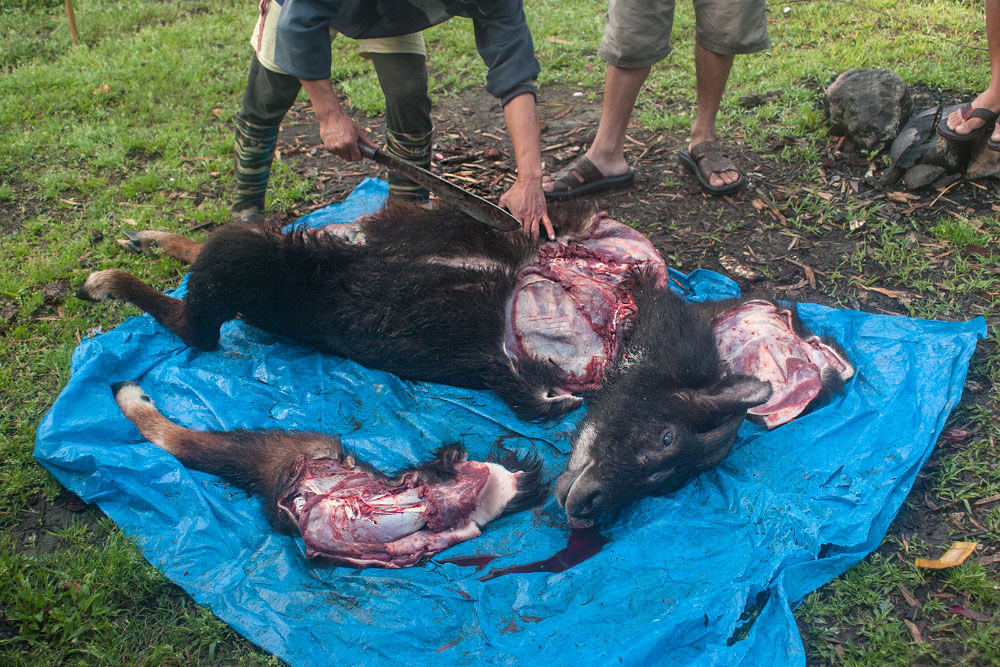 "
"
In April 2012, I did a two-day, solo-bike drive from Roing to Anini in a thunderstorm in the extreme Northeastern part of Arunachal Pradesh. The rains stopped on the second morning, and while I was on the last stretch to Anini, I came across a fresh kill of a Himalayan Serow made by wild dogs. However, before the wild dogs could feed on the kill they were driven away by the local villagers, and the kill was taken to the village by jeep. Within no time, the serow was hacked and distributed amongst the villagers. This is a common practice not only in northeast India but in parts of peninsular India as well. However, the situation in the two landscapes is significantly different. Across most of peninsular India, there are few or no reports of Human-Wild dog conflict. This is because of a healthy prey base in the region. Northeast India, on the other hand, suffers from the widely documented empty forest syndrome — forests devoid of wildlife, thanks to rampant and widespread hunting by local communities. This results in a very poor prey base. Hence there is always conflict between humans and wild dogs. In fact, in several places in the Northeast, there are official bounties on wild dogs placed by village councils. Predators (and prey, of course) not only face direct and constant persecution by hunting, but their hunted prey is also stolen from beneath their noses — making chances of survival grim for these carnivores. It is not a coincidence that wild dog populations have plummeted in the Northeast.

 CI is a non-profit, non-commercial portal that aims to facilitate wildlife and nature conservation by providing reliable information and the tools needed to campaign effectively.
CI is a non-profit, non-commercial portal that aims to facilitate wildlife and nature conservation by providing reliable information and the tools needed to campaign effectively.
Chosen as 'Picture of the Week'
In north-east India wild carnivores like dholes have a tough time surviving, not just because of a scarcity of prey due to illegal hunting, but also because the kills they do make are often misappropriated by humans.